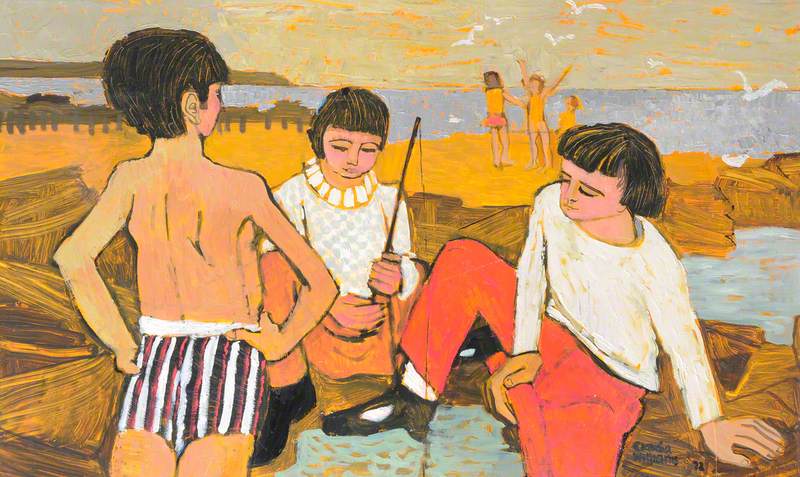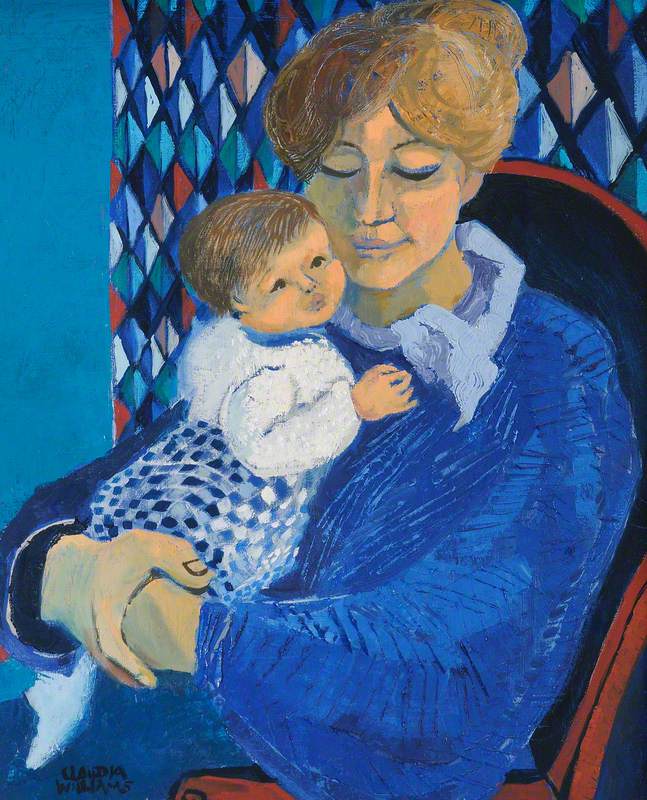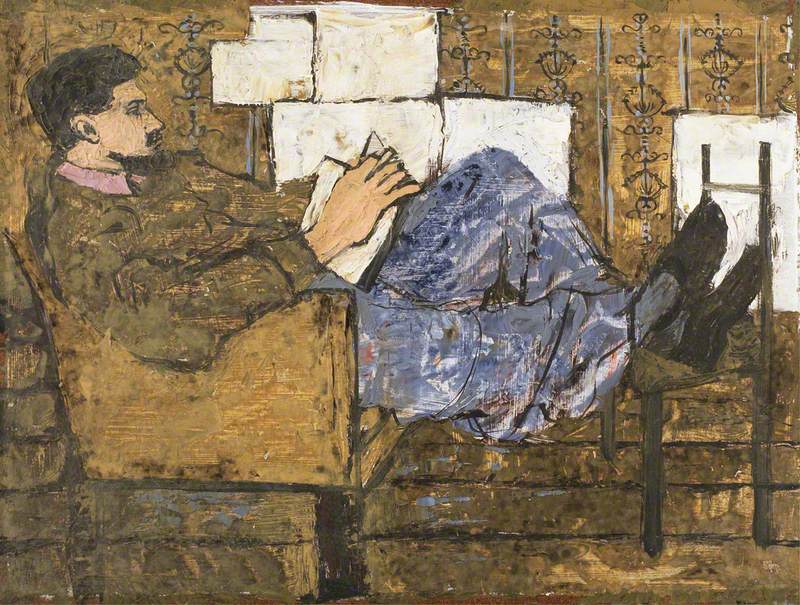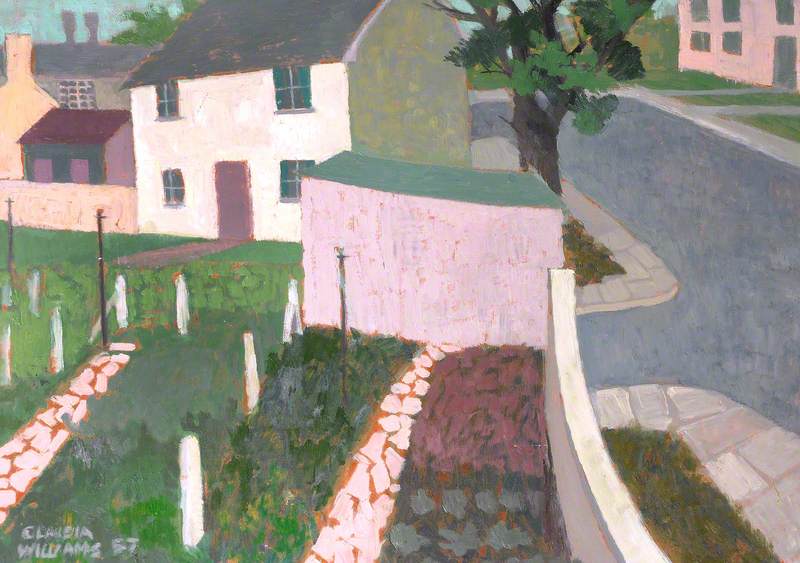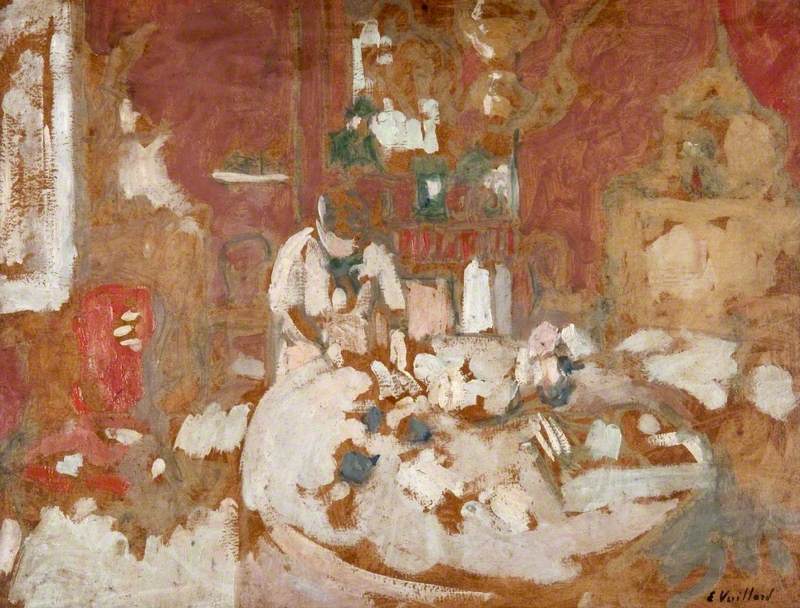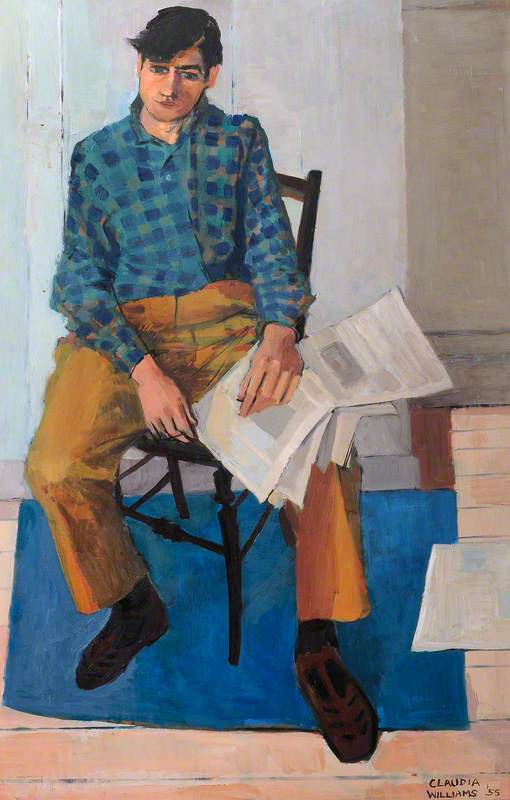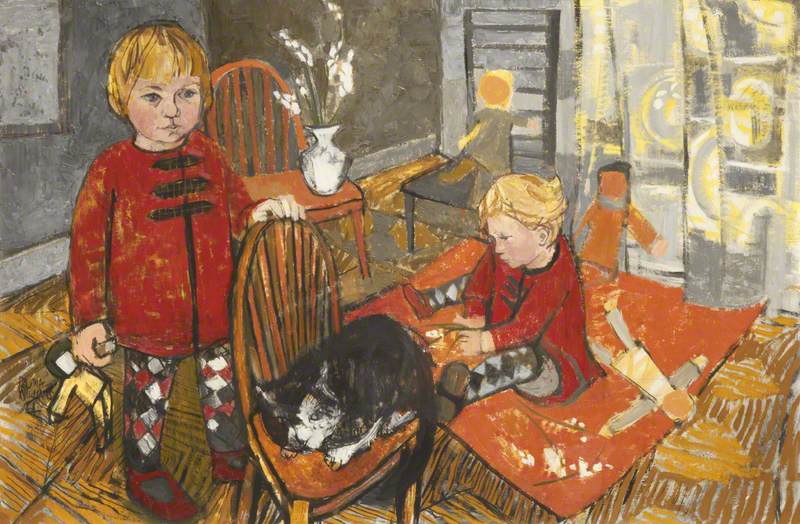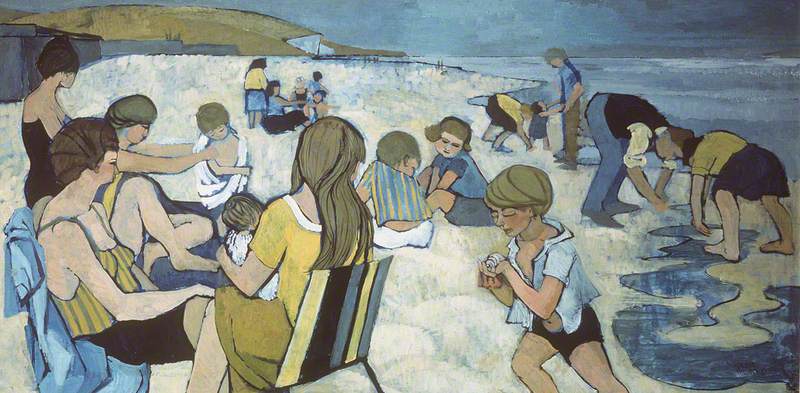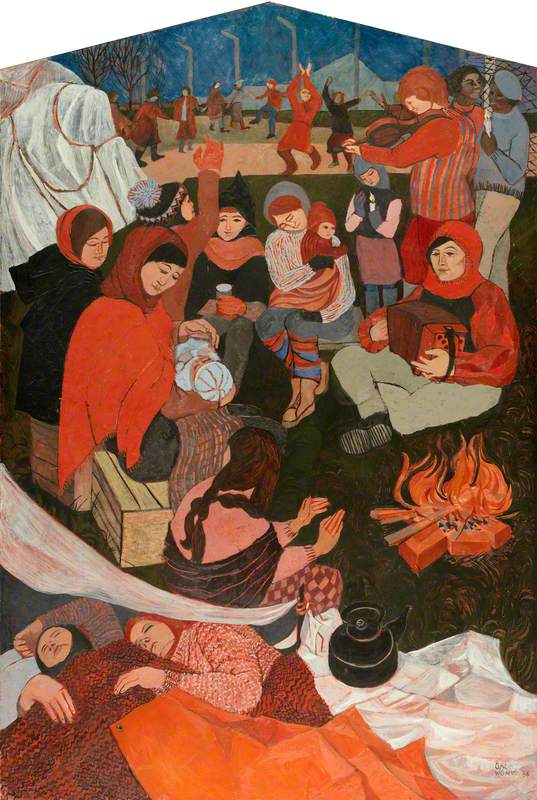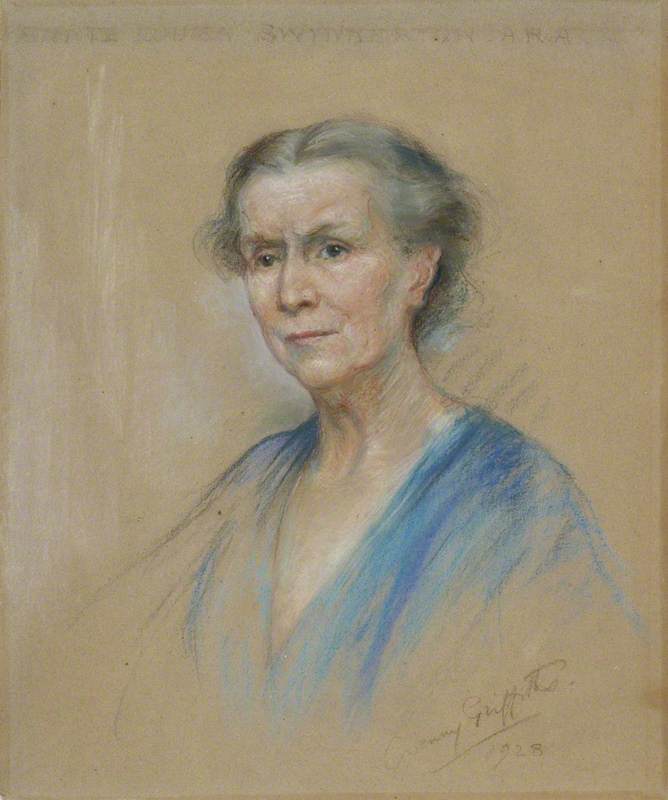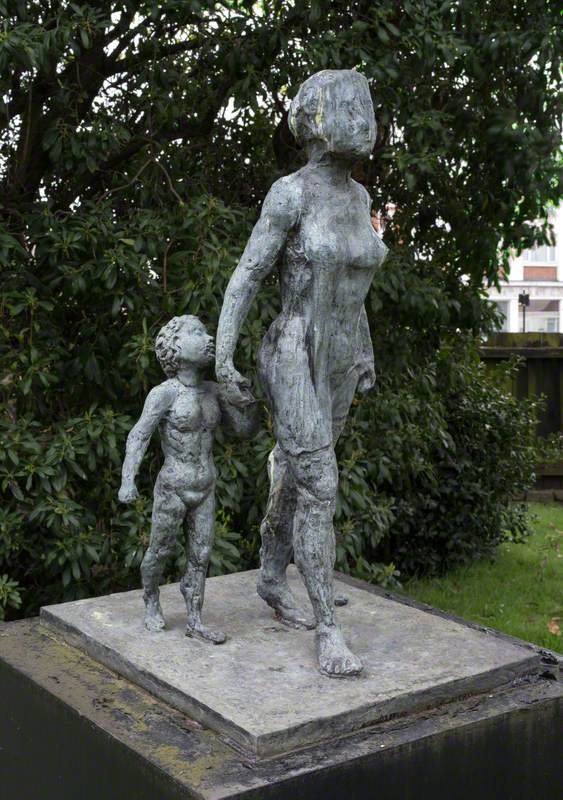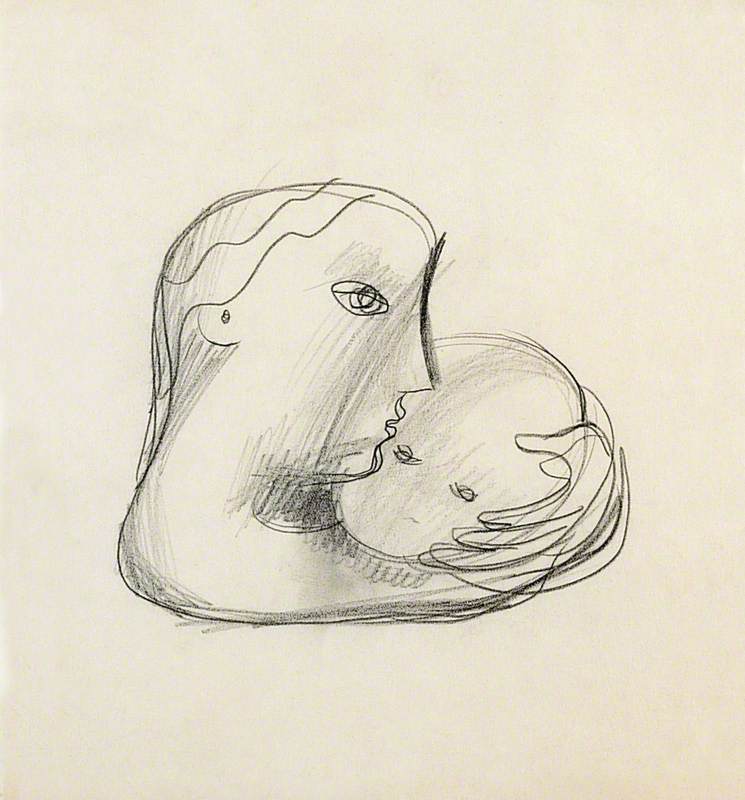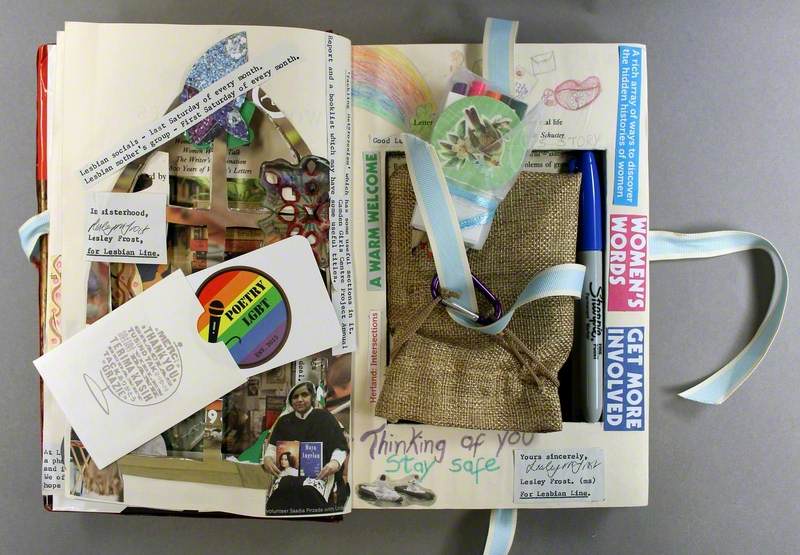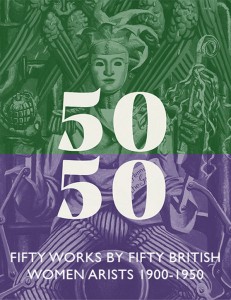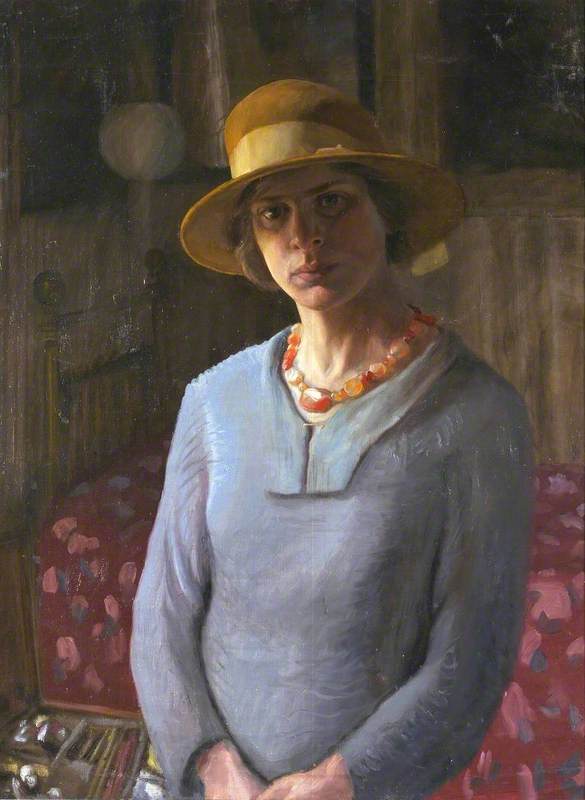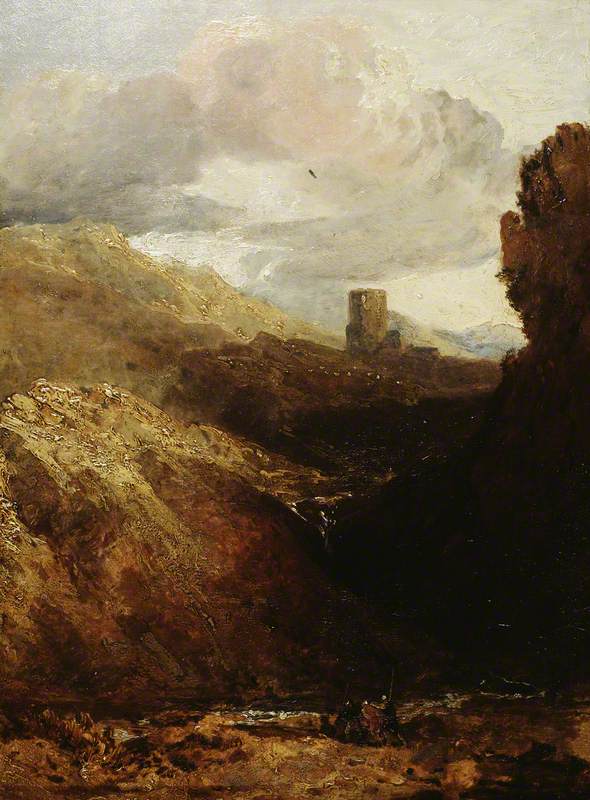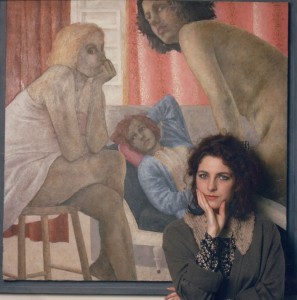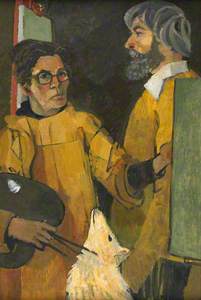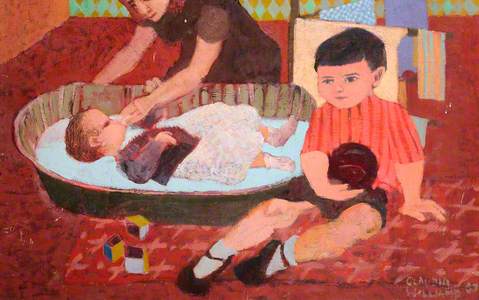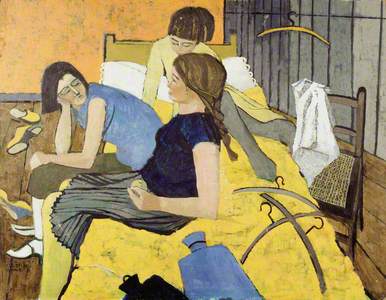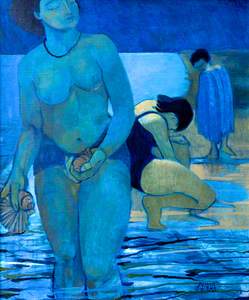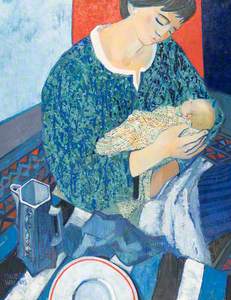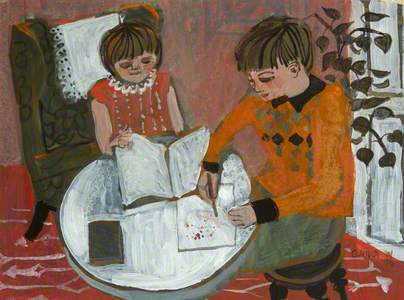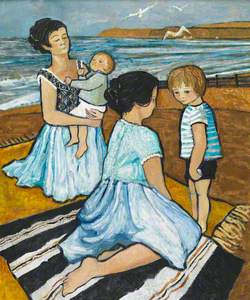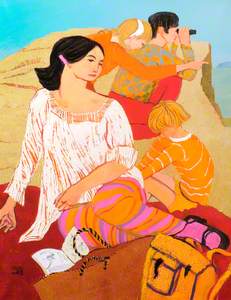To say that Claudia Williams (1933–2024) was a figurative painter does not begin to convey the autobiographical dimensions of her work. What is not immediately apparent is that many of Williams' compositions, however abstracted or generalised their figures may be, are rooted in observations of real people in actual situations.
While her paintings, which were produced across seven decades, can be grouped according to themes such as mothering, children at play or leisure activities at the seashore, our appreciation of them grows when we look at them in the context of the artist's life.
Even a seemingly impersonal and uncharacteristic composition such as View from a Window (1957) can be read as part of an extended visual diary. Williams painted it looking out onto the back garden of her first home in Wales, a council house on a newly built estate in Pencraig on Anglesey. The vantage point is the room where she had given birth to the second of her four children a year earlier.
Although she was born and raised in Surrey, Williams – whose paternal great-grandfather was Welsh – felt by then closely connected to Wales. She and her parents had relocated to the Llŷn Peninsula just after the end of the Second World War. And it was there, in North Wales, that she met her future husband, Gwilym Prichard (1931–2015), a headmaster's son from Llanystumdwy who would become one of the foremost Welsh landscape painters of his generation.
Self Portrait with Gwilym
c.1968
Claudia Williams (1933–2024) 
The coast held a special attraction for Williams and Prichard alike. An early beach scene by Williams was runner-up for the Gold Medal at the Royal National Eisteddfod at Llangefni in 1957. And yet much of her work from the mid-1950s to the 1960s is reflective of a period when Williams struggled to make time for painting and when few opportunities to draw in the outdoors presented themselves.
Williams became preoccupied instead with the interior of her home – the location of which changed numerous times over the years – and with the young people who inhabited it.
Family would become the predominant theme of her work. Like View from a Window, her 1957 work The Carry Cot dates from those early years in the council house, and depicts Williams' two eldest sons. The boy on the right is John Ceri Pritchard (b.1954), now a familiar figure in the contemporary art world.
While she had little direct access to modern art at the time, Williams took inspiration from reproductions of works by the French painter Édouard Vuillard (1868–1940) – known for his domestic scenes – an influence that is noticeable in the treatment of the background. 'Time was so precious,' Williams remarked about her experience as a young artist-parent.
As if to stretch the moment, Williams concentrated not only on the features of her sitters but also on the pattern of their clothing and the furnishings, carpets and blankets surrounding them. A love of textiles is clear in Williams' art. This appreciation dates back to her school days in the early 1940s. At primary school, Williams learned to weave. Seeing the 'effect of one colour against another or interwoven together' was a 'revelation' to her.
Occasionally, Williams was grateful to have a 'sitter who did not wriggle' or was not in need of 'changing'. Reminiscing in 2013 about Man in a Checked Shirt, nearly 60 years after it was made in 1955, Williams quipped: 'I remember that shirt, the spindly chair, the cords and the sitter!' The man in the checked shirt is Prichard, 'before he grew his beard,' a distinctive feature that would make clear his presence in later portraits such as Artist Resting (1959) and The Artist at the Easel (2002).
The Artist at the Easel (Gwilym Prichard)
2002
Claudia Williams (1933–2024) 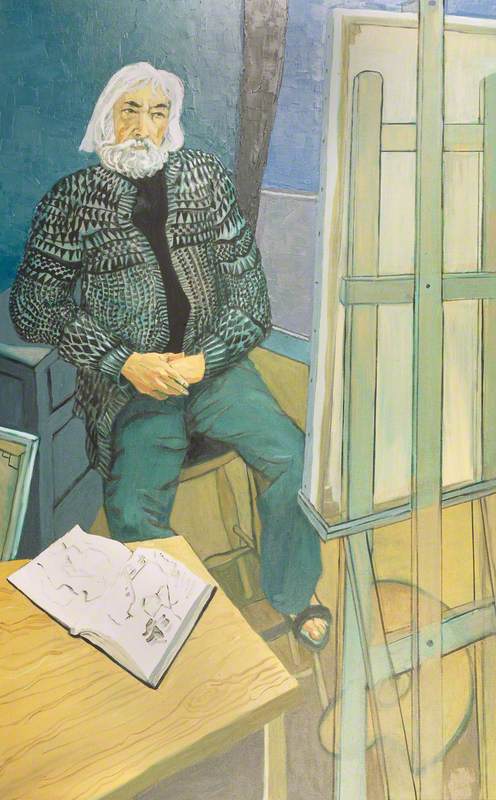
Throughout the 1960s, Williams continued to explore the self-absorbed world of children at play. Two Children with a Cat (1964) was commissioned by the German-born novelist Eva Tucker (1929–2015). Tucker had moved to Britain as a child and, like Williams, lived in North Wales at the time. Even in commissioned portraits such as this one, Williams' aim is not representational accuracy but a search for essential forms and the gestures characteristic of her subjects.
While many of her earlier paintings on board are small – reflecting the lack of time available for painting – Williams always preferred working on a large scale. It is on a vast canvas that a moment can become monumental and the mundane can take on an air of grandeur. A 'larger canvas offers so much more scope,' Williams commented on her practice, especially since she liked to 'experiment with textures and colours,' as well as with ways in which paint is applied.
Paintings such as Collecting Shells (1981) – which shows what Williams called a 'family occupation going back to [her] parents' time' – provided opportunities to explore both the narrative and the decorative potential of scenes from everyday life.
Memories, whether personal or communal, inform Williams' art. As a result, the dates of her paintings can obscure their autobiographical nature. Bedsitter II with Coat Hangers (1981), for instance, was based on drawings that Williams had made of her fellow students at Chelsea School of Art some 30 years earlier. Rather than continue her training, Williams had decided to leave the School to raise a family.
Bedsitter II with Coat Hangers
1981
Claudia Williams (1933–2024) 
In Bedsitter II with Coat Hangers, Williams looks back at the start of her career from the perspective of a mother whose children are about to leave home and whose purpose and priorities are beginning to shift once again.
Challenges and uncertainties notwithstanding, Williams' paintings generally evince her cheerful disposition and positive outlook. Even Greenham, Peace Vigil (1984), her rendering of the Women's Peace Camp at the proposed site for the instalment of nuclear weapons at RAF Greenham Common in Berkshire, celebrates a spirit of solidarity.
The painting shows none of the hardship endured by activists who were living 'for years' in 'very basic shelters made from branches and sheets of plastic' that Williams had witnessed on her visits to the camp. Celebratory and exuberant, the composition is based on biblical motifs expressive of the Catholic faith to which Williams converted in 1956 and on which she drew for her art.
In December 1984, Williams and her husband, then in their early 50s, decided to sell their home in North Wales. Encouraged by their son Ceri, they headed for the Greek island of Skiathos. Although the arrangement – initially an opportunity to dog sit – was temporary, the couple's departure marked the start of a 17-year absence from Wales. It was an experience that, as Williams put it, 'pushed' her work in 'new directions'.
Collecting Shells, Moonlight
1990
Claudia Williams (1933–2024) 
The change this meant for her art is discernible in a more vibrant palette, and the prevalence of blues in particular, as exemplified by Collecting Shells, Moonlight (1990). It also brought her recognition in France, where Williams and Prichard lived and worked after their sojourn in Greece. In 1995, the couple were awarded a silver medal by the Academy of Arts, Science and Letters in Paris in recognition of their contribution to the arts in France.
Williams and her husband returned to Wales in 2000. That year, a major retrospective of Williams' work was staged at the National Library of Wales in Aberystwyth. To reaffirm her ties with Wales, Williams embarked on a series of narrative paintings commemorating the loss of the Welsh community of Capel Celyn in the Tryweryn Valley.
Tryweryn: Claudia Williams
front cover of book by Ceridwen Lloyd-Morgan, published by Y Lolfa 
The village was flooded in 1965 to make way for a reservoir built to improve the water supply for the city of Liverpool and its environs. The series was exhibited at the National Library in 2010, and a monograph on Williams followed in 2013. Much exhibited during this period, Williams remained active as an artist into her 80s.
Williams' paintings of mothers and children in domestic settings or in moments of play and relaxation are at once realist and idealised, ordinary and ornate. The joy that Williams communicates in her work is largely the result of an artistic curiosity counterbalanced by compassion. 'People,' she declared, 'are always interesting'; and, as is palpable in the paintings she created throughout her career, Claudia Williams was always interested in them.
Dr Harry Heuser, writer, educator and exhibition curator living in Wales
Harry Heuser is the co-author, with Robert Meyrick, of Claudia Williams: An Intimate Acquaintance (Samson, 2013)
This content was supported by Jerwood Foundation
